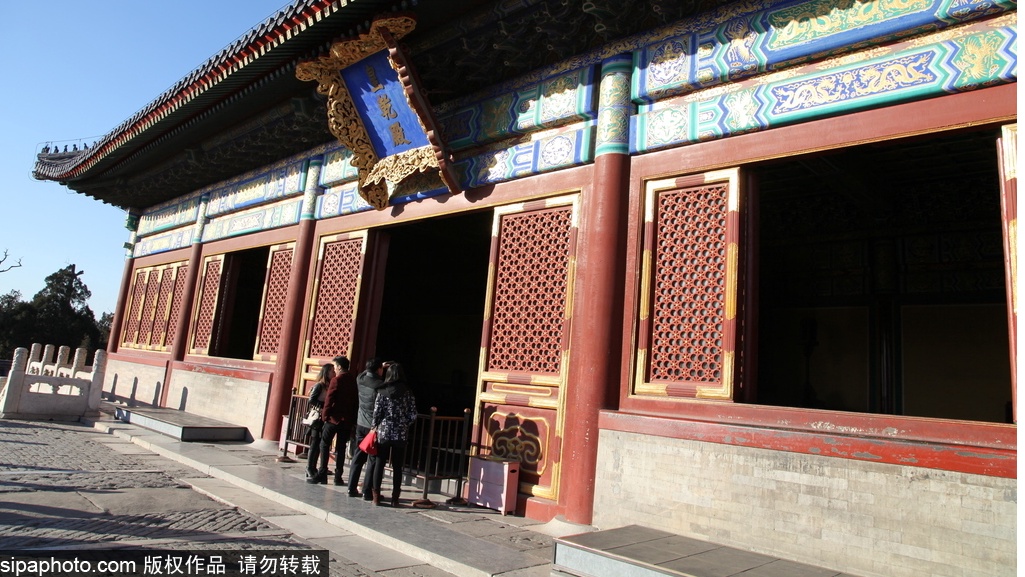The Hall of Imperial Zenith (Huangqiandian) of the Temple of Heaven, where memorial tablets of deities worshiped at the Altar of Praying for Good Harvests (Qigutan) are consecrated, was built in 1420, the 18th year during Emperor Yongle’s reign in the Ming Dynasty. Originally named “Tian Ku”, it was a six-bay hall roofed with yellow glazed tiles. It was renamed the “Hall of Imperial Zenith” after a reconstruction that reduced the six bays to five in 1545, the 24th year during Emperor Jiajing’s reign in the Ming Dynasty. The three Chinese characters - “Huang Qian Dian”, is the autograph of the emperor. The yellow glazed tiles were replaced by blue ones in 1750, the 15th year during Emperor Qianlong’s reign in the Qing Dynasty, so as to symbolize the blue sky.

The Buddhist-style stone base in the center of the hall marks the central position that houses the memorial tablet of the Supreme Ruler of Heaven, while the stone platforms on the two sides lay the memorial tablets of the emperor’s ancestors. During the reign of Emperor Xianfeng in the Qing Dynasty, the first eight emperors’ memorial tablets of the Qing Dynasty were placed in the Hall of Imperial Zenith. The stone platforms on the east side of the hall place the memorial tablets of the first, third, fifth and seventh emperors of the dynasty from north to south orderly. The platforms on the west side lay the second, fourth, sixth and eighth emperors orderly from north to south. This form of orderly laying the memorial tablets of emperor’s ancestors on two sides according to generations is called the Zhao-Mu system, which embodies the Chinese feudal patriarchal system. Zhao and Mu mean uneven and even numbers, respectively. The Zhao-Mu system was attached much importance to by ancient people.
According to The Book of Rites (Liji Jitong), the Zhao-Mu system was used to establish the orderliness between father and son, the far and the near, the elder and the young, and the close and the distant. It was a tradition that, the day before the annual Ceremony of Prayer for Good Harvests, the emperor would offer incense in the Hall of Imperial Zenith, inspect the altar and check the sacrificial offerings. Moreover, the night before sacrifice rites, officials of the ministry of rites and sacrifices would also hold the ceremony to invite the deities in the hall. After the Ceremony of Prayer for Good Harvest, the memorial tablets would be escorted back to the hall. In order to pay respect to the Supreme Ruler of Heaven, the officials would offer incense in the hall on the 15th day in lunar calendar each month.



